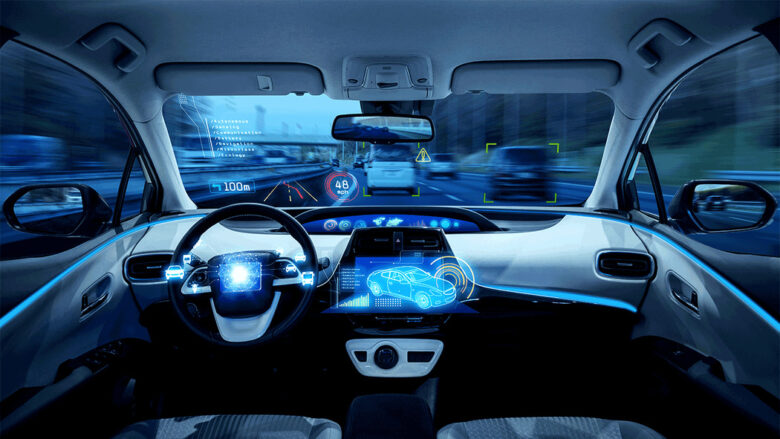Self-driving cars, once an idea in science fiction, are quickly becoming a reality. As technology advances, self-driving cars are becoming more and more popular. They will change the way we work and travel. One of the most important things about this change is that the roads become safer. The safety of self-driving cars is a major issue that affects how the technology is viewed and how quickly it is adopted. This article discusses the key safety features, potential benefits and issues of self-driving cars and shows how they could change the future of driving.
1. Eliminate Human Error:
Self-driving cars have high-tech sensors, cameras and artificial intelligence systems that allow them to drive independently and make choices without human assistance. Together, these technologies form a complete safety system that can observe what is happening around the car, guess possible dangers and take action to prevent accidents. One of the best things about self-driving cars is that they eliminate the need for human error, which is a major cause of accidents. The accuracy and regularity of automated systems compensate for problems beyond human control, such as distraction, fatigue, errors in judgment, or slow responses.
2. Reduce Car Accidents and Deaths:
One of the most exciting things about self-driving cars is their potential to help reduce traffic accidents and deaths. The National Highway Traffic Safety Administration (NHTSA) says about 94 percent of traffic accidents are caused by human error. With advanced algorithms and on-the-fly data processing, self-driving cars could significantly reduce the number of accidents caused by human error. For example, self-driving cars can maintain proper following distances, accurately follow speed rules, and respond to sudden changes in traffic conditions much faster than human drivers.
3. Safe and Reliable:
Self-driving cars are also equipped with multiple layers of backup to ensure they are safe even if the system fails. Redundant systems have backup sensors, various communication methods and fail-safe features that allow the car to stop safely if a critical component stops working. This layered approach makes self-driving cars more reliable because they are less likely to suffer from malfunctions that could cause an accident in a human-driven car.
4. Communication and Coordination of Traffic Between Vehicles:
Self-driving cars can communicate with each other and with the transportation infrastructure, which is another important safety benefit. Vehicle-to-vehicle (V2V) and vehicle-to-infrastructure (V2I) communication systems allow autonomous vehicles to share information about where they are, how fast they are traveling, and what actions they want to take. High connectivity allows drivers to work together, reducing the risk of accidents and improving overall traffic conditions. For example, self-driving cars can read and respond to traffic signs in advance, merge seamlessly into the flow of traffic and avoid sudden lane changes or braking, which could lead to accidents.
5. Issues to Consider and Ethical Issues:
However, there are some problems with the transition to self-driving cars. For self-driving cars to be safe, their systems must be tested and proven to work in different driving situations. Software and device manufacturers must consider potential security issues as well as the ethical issues raised by decision-making algorithms. For example, how should a self-driving car decide whether the safety of passengers or pedestrians is more important in the event of an unavoidable collision? In order for people to trust self-driving cars, these ethical issues must be carefully considered and openly addressed.
6. Stay Safe Online:
Another important part of the safety of self-driving cars is cybersecurity. As cars become more connected and dependent on software, hackers may try to break into them. Ensuring that hackers and other unwanted individuals cannot gain access to autonomous vehicles is important to ensure that autonomous vehicles are safe and reliable. To ensure that autonomous vehicles are protected from cyber threats, automakers will need to implement strong security measures such as encryption, secure communication methods and regular software updates.
Conclusion:
The arrival of self-driving cars is about to change the future of driving. The cars claim to make the roads safer by eliminating human error, reducing the risk of accidents and speeding up traffic through advanced communications technology. But before self-driving cars can reach their full potential, issues such as system stability, cybersecurity, ethical decision-making and regulatory compliance must be addressed. If these issues are addressed, self-driving cars could make transportation safer and more efficient. This will ultimately change the way we drive and move.
FAQs:
1. What is a self-driving car?
Self-driving cars, also known as self-driving cars, are cars that are equipped with high-tech features such as sensors, cameras and artificial intelligence to help people drive and drive independently. These tools help them decide what to do and respond to their environment.
2. How will self-driving cars make the roads safer?
Self-driving cars make roads safer by reducing the chance of human error, which is the cause of most accidents. Their role is to maintain the correct distance between vehicles in front, obey speed rules, and respond quickly to sudden changes in traffic conditions.
3. What safety features do self-driving cars have?
ADAS, multiple layers of redundancy, real-time data processing, and vehicle-to-vehicle (V2V) and vehicle-to-infrastructure (V2I) communications technologies are some of the safety features built into autonomous vehicles. All these features work together to ensure safe navigation and functionality.
4. What will a self-driving car do if the system fails?
Self-driving vehicles are equipped with backup systems in case something goes wrong. If one of the primary systems fails, the backup system ensures that the car can still drive or stop safely. This multi-layered approach makes things more reliable and secure.
5. Can self-driving cars talk to each other?
Self-driving cars can communicate with each other via V2V devices. This allows them to share information about where they are, how fast they are traveling, and what action they want to take. This allows them to drive more safely together and prevent accidents.




